Geography
The Indian Climate – The Summer Season of India
Indian Climate – Seasons
Table of Contents
-
- The cold weather season or winter season,
- The hot weather season or summer season,
- The south-west monsoon season or Rainy season, and
- The season of the retreating monsoon or cool season.
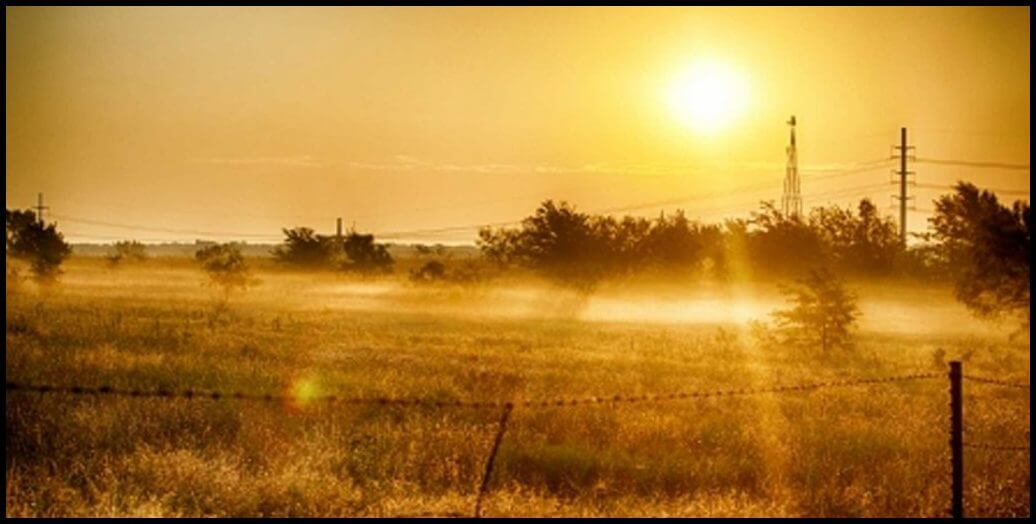
Summer Season of India (Mar – May)
- Period from March to June.
- High temperature and low humidity are chief characteristic.
- Also known as hot weather Season or Hot Dry Summer Season. Sometimes also called as Pre Monsoon Period.
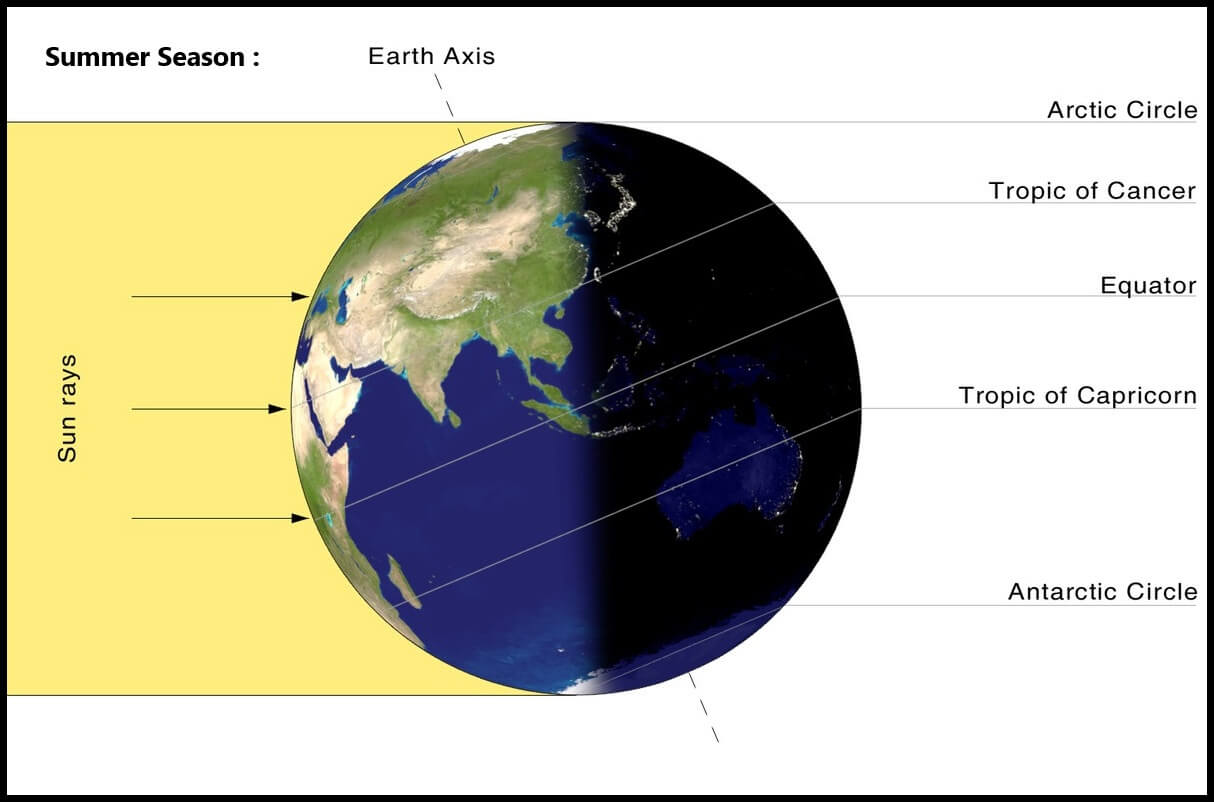
1. Temperature Conditions
-
- As the sun shifts northward towards the Tropic of Cancer after the vernal Equinox, the whole India experiences an increase in temperature.
- The southern parts of the country are distinctly warmer in March and April whereas in June, north India has higher temperatures.
- In March, the highest temperatures occur in the southern parts of the Deccan Plateau (40-45°C).
- In April the highest temperature of about 45°C is recorded in the northern Madhya Pradesh.
- In May the highest temperature is seen in Rajasthan where temperatures reaches as high as 48°C.
- In June the maximum temperature is in Punjab and Haryana.
- The highest temperatures recorded are 50.5°C at Alwar on 10th May, 1956 and 50.6°C at Ganganagar on 14th June, 1935.
- The highest temperatures are recorded just before the onset of the southwest monsoons (late May to early June).
- The diurnal range of temperature is also very high. It may be as high as 18°C in some parts.
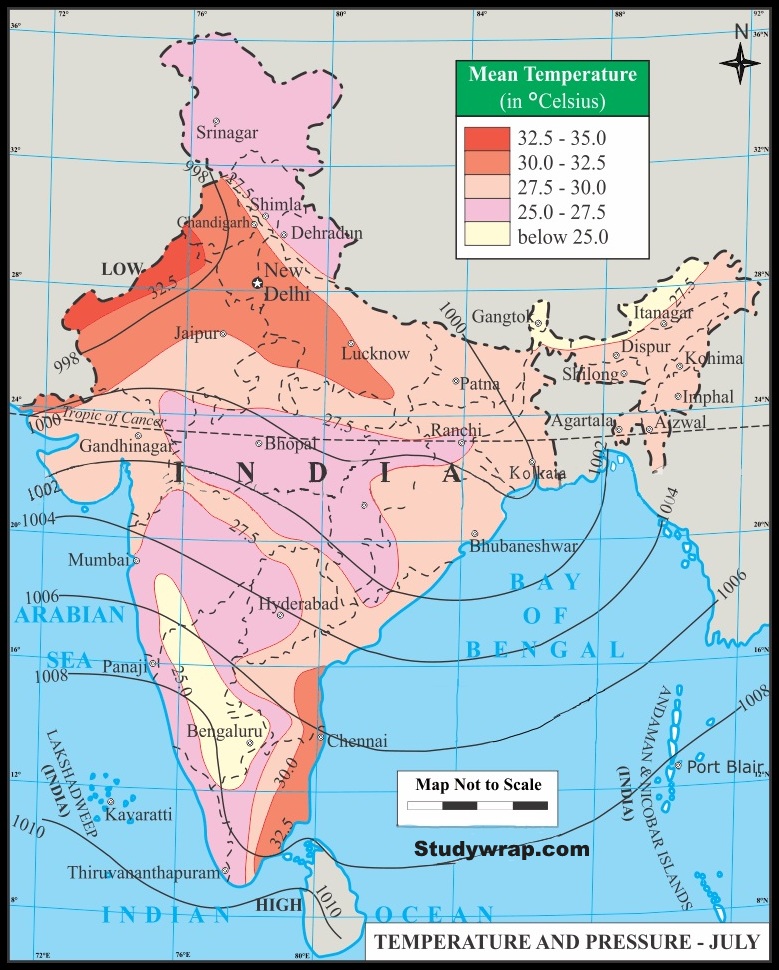
a. North India
-
-
- April, May and June are the months of summer in north India.
- In May, the heat belt moves further north, and in the north-western part of India, temperatures around 48°C are not uncommon.
-
b. South India
-
-
- The Peninsular region of south India with moderating effect of the oceans keeps the temperatures lower than that prevalent in north India. So, temperatures remain between 26°C and 32°C.
- The temperatures in the hills of Western Ghats remain below 25°C. Due to altitude and the prevailing westerly winds temperatures along the west coast are comparatively lower than those prevailing on the east coast.
- The temperature increases from the coast towards the interior areas.
-
c. Heat Waves
-
-
- Northern and central parts of India experience heat waves in this season.
- A heat wave is an abnormally high temperature experienced by a region. Temperature increase of the order of 6° to 7°C above normal is termed as ‘moderate’ and 8°C and more as ‘severe’ heat wave.
- Most of the heat waves develop over Rajasthan, Punjab and Haryana (location far away from the sea). From here they spread over Uttar Pradesh and Bihar.
- The strong north westerly winds (caused due to strong divergence in north-west India) with a long land journey over hot regions check the onward march of the sea breeze over eastern coastal belt and create heat wave conditions over Odisha and Andhra Pradesh.
- The heat waves strike by the end of April and their maximum occurrence is in May and June till the onset of southwest monsoon.
- The normal duration of heat waves is 4 to 5 days. However, heat waves are rare over the peninsula south of 13°N latitude due to maritime conditions prevailing there.
-
2. Surface Pressure
-
- The atmospheric pressure is low all over the country due to high temperatures.
- Since the sun goes slowly towards the north (summer solstice), the Inter Tropical Convergence Zone (ITCZ) begins to move towards the north (Eventually reaching up to 25° latitude in July).
- Low pressure is noticed in north-western India where temperature are high. The overall pressure gradient is low.
3. Winds during Summer Season of India
-
- There is a marked change in the direction and speed of the winds from winter.
- The winds are by and large light and variable.
- The general direction of winds is from the north-west and west in northern India, and from the south-west in the Arabian Sea and adjoining coasts.
a. Loo
-
-
- Loo winds originate over Iranian, Baloch and Thar deserts.
- In the months of May and June, high temperature in north-western India builds steep pressure gradient under such conditions, hot dust-laden strong winds known as ‘loo’ blow.
- It blows with an average speed of 30-40 km per hour and persists for days.
-
b. Andhis
-
-
- These strong dust storms result from the convective phenomenon and their intensity increases in the afternoon. These are locally known as Andhis.
- The wind velocity often reaches 50-60 kmph and the visibility is reduced to a few metres.
- These are essentially short-lived duststorms, which move like a solid wall of sand and dust.
- They are short lived and bring little rainfall giving much needed relief from heat temporarily.
- Dust storms in the evening are very common during May in Punjab, Haryana, Eastern Rajasthan, Jammu region, Delhi, Uttar Pradesh, Bihar and Madhya Pradesh.
-
c. Thunderstorms in Summer Season
-
-
- The strong convectional movements related to the westerly jet stream lead to thunderstorms in eastern and north-eastern part of the country.
- They normally originate over Chota Nagpur plateau and are carried eastwards by westerly winds.
- The areas with highest incidence of thunderstorms are Assam, Arunachal Pradesh, Nagaland, Mizoram, Manipur, Tripura, Meghalaya, West Bengal and the adjoining areas of Odisha and Jharkhand.
- In the south the thunderstorms occur in Kerala (Mango Showers) and adjoining parts of Karnataka (Blossom Showers) and Tamil Nadu, particularly during evenings and nights.
-
d. Norwesters and Thunderstorms
-
-
- The thunderstorms which originate over Chhotanagpur plateau are carried eastwards by westerly winds.
- In West Bengal and the adjoining areas of Jharkhand, Odisha and Assam, the direction of squalls (Squall – a sudden, violent gusty wind) is mainly from the northwest, and they are called norwesters.
- They are often very violent with squall speeds of 60 to 80 km per hour. Hailstones sometimes accompany showers.
- They cause heavy damage to standing crops, trees, buildings, livestock and even lead to loss of human lives.
- Sometimes they are useful for tea, jute and rice cultivation. In Assam, these storms are known as ‘Barodoli Chheerha’.
- The period of maximum occurrence of these storms is the month of Vaisakh (mid-March to mid-April) and hence, they are locally known as Kalabaisakhis, the black storms or a mass of dark clouds of Vaiasakha.
-
e. Western Disturbances
-
-
- Frequency and intensity gradually decrease with advancement of summer.
- Approximately 4, 3 and 2 western disturbances visit north-west India in March, April and May respectively.
- They cause cloudiness in north western India and snowfall in higher reaches of the Himalayas.
-
f. Tropical Cyclones –
-
-
- Tropical Cyclones are intense low-pressure systems that develop over the seas or oceans in the tropical and subtropical regions. Tropical cyclones cause destruction in the coastal areas because of:
-
-
- High wind velocities.
- Storm Surge ( i.e. rise of coastal waters due to approaching cyclone)
- Torrential rainfall which often lead to floods in the coastal areas.
-
-
- Tropical Cyclones are intense low-pressure systems that develop over the seas or oceans in the tropical and subtropical regions. Tropical cyclones cause destruction in the coastal areas because of:
-
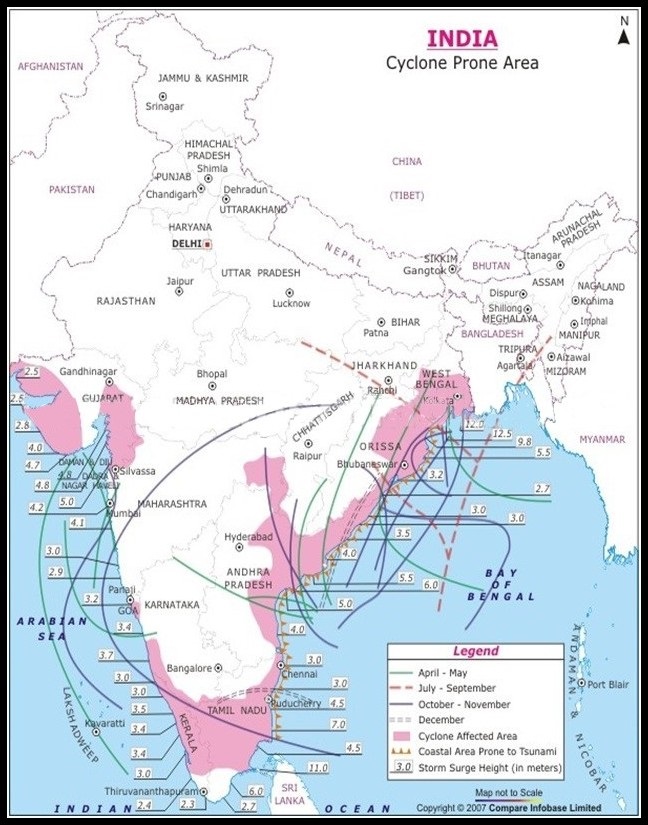
-
-
- Tropical cyclones originate in the Bay of Bengal and Arabian Sea.
- In the month of March, few cyclones are formed in the Bay of Bengal but they do not affect the mainland of India.
- Their frequency rises steeply in April and the number of cyclones gets more than doubled in May than those originating in April.
- About three-fourths of the tropical cyclones are born in the Bay of Bengal and the rest originate in the Arabian Sea.
- Most of the depressions in April originate to the south of 10°N while those originating in May are born to the north of this latitude.
- Most of the storms initially move west or north-west but later they recurve northeast and strike Bangladesh and the Arakan Coast of Myanmar. Very few hit Indian coast while some dissipate over the sea itself.
- The whole of the east coast of India, the coastal areas of Bangladesh and Arakan Coast of Myanmar are liable to be hit by tropical storms in May. Some of which are quite strong.
- In the Arabian Sea, major storms are formed in May between 7° and 12° N latitudes.
- Most of them move away from the Indian coast in a north-westerly direction and dissipate in the sea.
- Few originate close to the Indian coast. They move towards the north-east and hit somewhere along the west coast of India.
- The fully developed low-pressure systems called cyclones generally form in the lower latitude belt (10° N – 14°N) before and after the SW monsoon. They are very intense systems and are responsible for the major portion of rainfall over the peninsula.
- These systems reach their maximum intensity before/after the monsoon period.
-
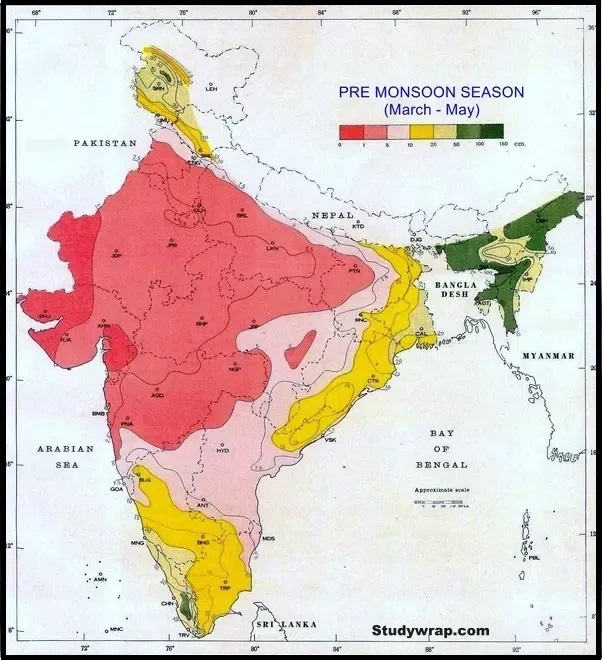
3. Precipitation in Summer Season of India
-
- This season is not totally rainless (only one per cent of the annual rainfall).
- Occasionally, the moisture-laden winds are attracted towards the periphery of the trough. A sudden contact between dry and moist air masses gives rise to local storms of great intensity. These local storms are associated with violent winds, torrential rains and even hailstorms.
- The period of maximum occurrence of these storms is the month of Baisakh. These are thus locally called ‘Kal Baisakh (a calamity of the month of Baisakh)’.
- In Assam, these storms are known as “Bardoli Chheerha or Bordochila”.
- In the north-eastern parts of the country, dust storms bring little rainfall.
- The precipitation in Kashmir is mainly in the form of snow caused by western disturbances.
- The norwesters bring some rainfall in Assam, West Bengal and Odisha. The intensity of rainfall is high. The rainfall brought by the norwesters is known as the Spring Storm Showers.
- In the south, thunderstorms occur in Kerala and adjoining parts of Karnataka and Tamil Nadu particularly in the evenings and nights.
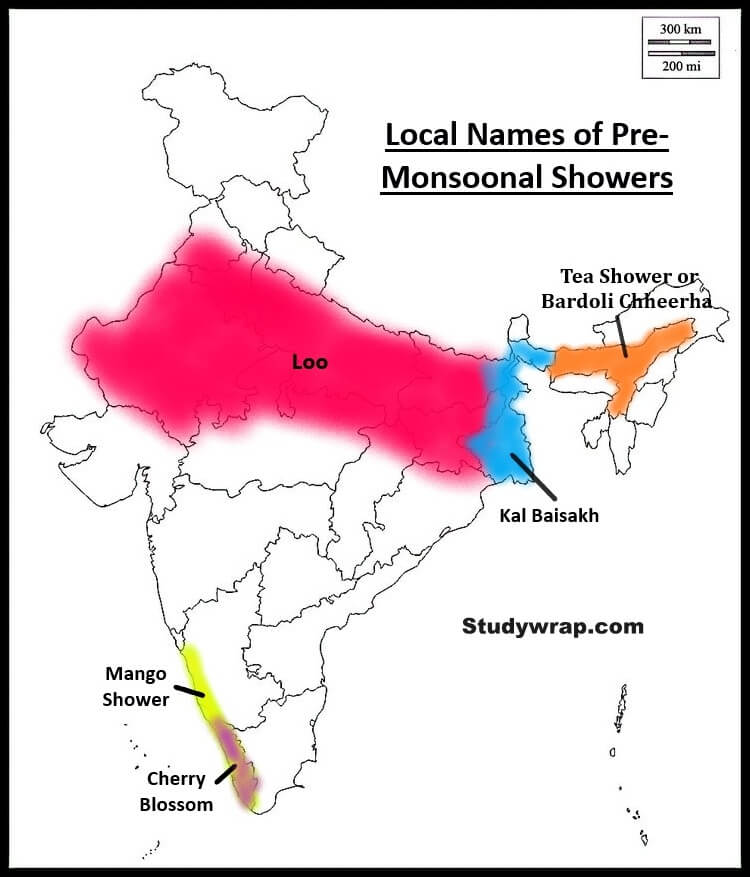
-
- These pre-monsoonal showers are called by various names:
-
- Tea showers in Assam ( they are good for tea, jute and rice)
- Mango showers in Kerala and coastal areas of Karnataka as they help in the early ripening of mangoes.
- Cherry Blossoms/ Coffee showers in Kerala and nearby areas (good for coffee plantations)
-
- These pre-monsoonal showers are called by various names:
So, this is all about the Climate of India in Summer Season or Summer Season of India.
In the next post (Click here), we will study about The Rainy Season in India.


Thank you sir
sir can you give previous year question papers of UPSC
Thanks for Sharing your Notes